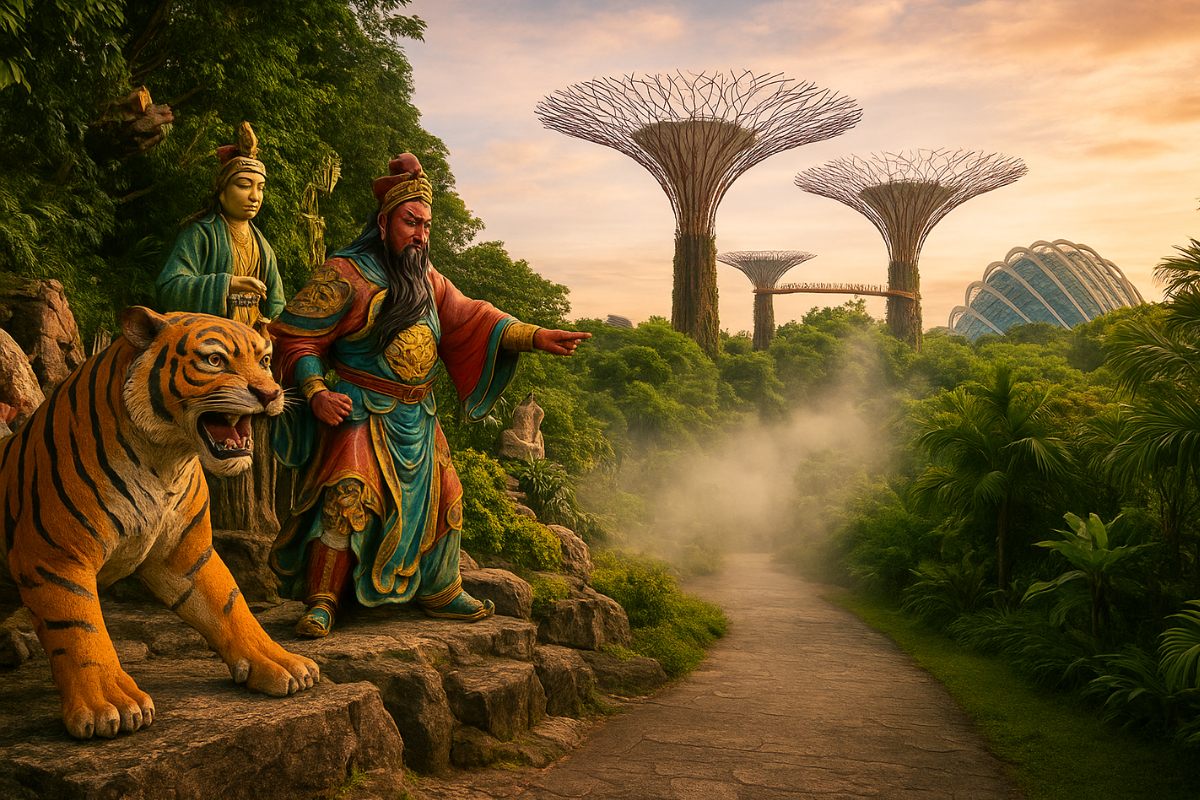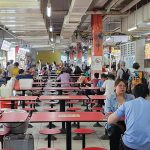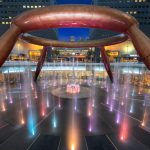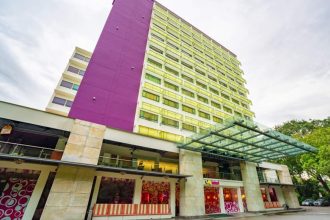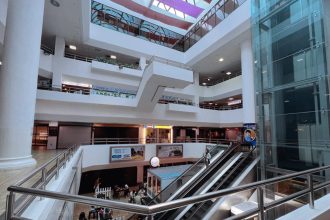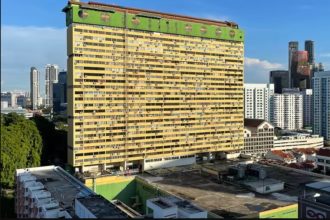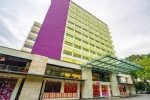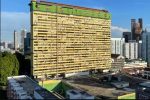Key takeaway
From the mythic statues of Haw Par Villa to Gardens by the Bay’s futuristic biodomes and Supertrees, Singapore’s built environment has moved from physical storytelling rooted in folklore to immersive, simulated ecosystems. These places are not just green lungs or tourist magnets. They reflect how Singapore reimagines nature and narrative in constructed spaces, a journey through real and simulated worlds.
In Singapore, “another world” takes on both a literal and metaphorical meaning. On one hand, you have Haw Par Villa, a surreal, statue-filled park that brings Chinese myths to life. On the other, there is Gardens by the Bay, where cooled glass domes and vertical “trees” recreate climates from afar. How did we travel from one to the other? And what does that say about Singapore’s relationship with culture, nature, and simulation?
Crafting legends at Haw Par Villa
Haw Par Villa sits at 262 Pasir Panjang Road, on the slope of a hill in the Pasir Panjang area. Originally a villa gifted by Aw Boon Haw to his brother Aw Boon Par, the compound was turned into a themed garden in 1937. The original architecture was by Ho Kwang Yew.
The park was once called Tiger Balm Garden, referencing the family business of the Aw brothers. It is packed with more than 1,000 statues and over 150 giant dioramas, depicting scenes from Chinese folklore, Confucian virtues, Buddhist and Taoist cosmology. These are not decorative only, they carry moral stories, sometimes gruesome ones. The famous Ten Courts of Hell, for example, confront visitors with depictions of judgment and afterlife.
Ownership lies with the Singapore Tourism Board, but since 2015, the park has been managed by Journeys Pte Ltd. The operators did large-scale restoration in the 2020–2021 period, including lighting upgrades and conservation works.
To reach it, you can take the Circle Line to Haw Par Villa MRT station, which opened in October 2011. Despite its rather low profile compared to Singapore’s newer attractions, Haw Par Villa remains a deeply human place, a physical space where myth lives in solid form. Visitors curious about similar themed experiences can also check out Singapore’s $70 million theme park for historical context on immersive environments.
Simulated nature in Gardens by the Bay
In contrast to Haw Par Villa’s figurative storytelling, Gardens by the Bay tells its story through living systems. Located in the Marina Bay area, this landmark spans about 101 hectares. It opened on 29 June 2012.
The master plan was designed by British firm Grant Associates, with Wilkinson Eyre Architects handling the two cooled conservatories. The Bay South Garden is 54 hectares alone, and includes the huge Flower Dome (1.2 hectares) and Cloud Forest (0.8 hectares) conservatories.
The Supertrees are perhaps the most iconic feature. There are 18 of them, ranging from 25 m to 50 m tall, designed as vertical gardens. They also incorporate environmental technology: solar cells, rainwater harvesting, and structures that help shade or cool the conservatories.
Aerial walkways connect the Supertree canopy, giving visitors a bird’s-eye view of the gardens. Visitors planning a visit might also enjoy exploring Singapore’s largest hawker centre, a short distance away, which complements the garden experience with culinary storytelling.
From myth to biome – a journey through simulated space
Why connect Haw Par Villa and Gardens by the Bay? It’s because they both ask us to walk through “other worlds,” but in very different ways.
Storytelling in stone versus storytelling in leaves
Haw Par Villa uses dioramas and sculptures to ground stories in physical form. You see the Ten Courts of Hell, or Journey to the West scenes. Each statue is a lesson, a parable, or a moral reminder.
In Gardens by the Bay, the stories are ecological. The plants themselves tell stories about different climates. The Supertrees tell us about sustainability. The conservatories show biodiversity under changing conditions. The simulation is not of myth, but of environments, of nature as technology.
Public value and engagement
Haw Par Villa is free to enter, making it a deeply democratic space. Though small, it has saved a slice of heritage and folklore. After its renovations, visitation rose; for instance, in 2019 it drew about 350,000 visitors.
Gardens by the Bay, by contrast, is a major public project. Operated as a separate entity, it draws national and international visitors. Its infrastructure supports large volumes, and the design won awards for both sustainability and architecture.
Bridging real and synthetic worlds; key themes
These two sites may seem worlds apart, yet they share a common approach: both invite visitors to step into environments that blend storytelling, design, and imagination. From sculpted morality tales to vast climate-controlled gardens, they highlight how Singapore crafts experiences that feel both grounded in reality and transported beyond it.
- Heritage as simulation: Haw Par Villa turns intangible folklore into a physical landscape.
- Ecological simulation as education: Gardens by the Bay re-creates climates and ecosystems in a controlled setting.
- Sustainability in structure: The Gardens’ Supertrees and conservatories blend technology and ecology.
- Accessible myth and nature: Both places are for the public, though in different scales and styles.
- Cultural continuity: Singapore is writing new narratives, from moral tales in statues to environmental stewardship in architecture.
Quick facts and take-home points
For visitors short on time, these key points offer a quick overview of how the two destinations compare and what makes each one distinct. They highlight the essential differences in history, scale, design, and visitor experience.
- Haw Par Villa was built in 1937; Gardens by the Bay opened in 2012.
- Haw Par Villa has over 1,000 statues and 150 dioramas; Gardens by the Bay has 18 Supertrees.
- The Gardens’ cooled conservatories replicate Mediterranean and cloud forest climates.
- Haw Par Villa is free and managed by Journeys Pte Ltd; Gardens by the Bay is run by its own organisation.
- Both sites invite visitors to step into spaces that go beyond Singapore’s everyday reality.
A table of shifting environments
This comparison sets the two locations side by side, making it easier to see how each one uses built design to create its own version of an altered or simulated world.
| Building / Site | Key Facts | Nearest MRT | Sources |
|---|---|---|---|
| Haw Par Villa | Opened 1937; over 1,000 statues; rich folklore narratives | Haw Par Villa MRT (Circle Line) | Roots / NHB |
| Gardens by the Bay | 101 ha; 18 Supertrees (25–50 m); two cooled conservatories | Bayfront MRT | NAS / NParks |
Why simulated spaces matter in a changing city
As Singapore continues to evolve, places like Haw Par Villa and Gardens by the Bay show how the city experiments with storytelling, identity, and environment through design. These spaces do more than entertain; they give form to ideas that would otherwise remain abstract, moral lessons, ecological issues, cultural memory, and imagined futures. By walking through them, visitors move through curated environments that layer symbolism, technology, and narrative, allowing each encounter to feel intentional and immersive.
Simulated landscapes also offer a way for the city to express creativity beyond functional architecture. They create room for fantasy, speculation, and emotional resonance, traits that are often overshadowed in Singapore’s efficiency-driven urban fabric. Whether through handcrafted figures or climate-controlled ecosystems, these environments invite people to pause and reflect on the values they represent. In doing so, they quietly influence how Singaporeans see their own histories and the futures they hope to build.
Windows into Imagined Spaces
Haw Par Villa and Gardens by the Bay are both portals into carefully crafted worlds. One transforms legend into a tactile landscape, while the other re-creates ecological environments in glass and steel. Walking through the Cloud Forest conservatory, visitors can appreciate the Cloud Forest conservatory features that simulate mountain climates. Together, these spaces reveal how Singapore designs encounters that are both educational and immersive, linking the past, present, and imagined futures. They also show how built environments can shape the way people form personal meaning in a fast-changing city.
